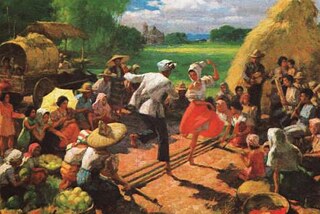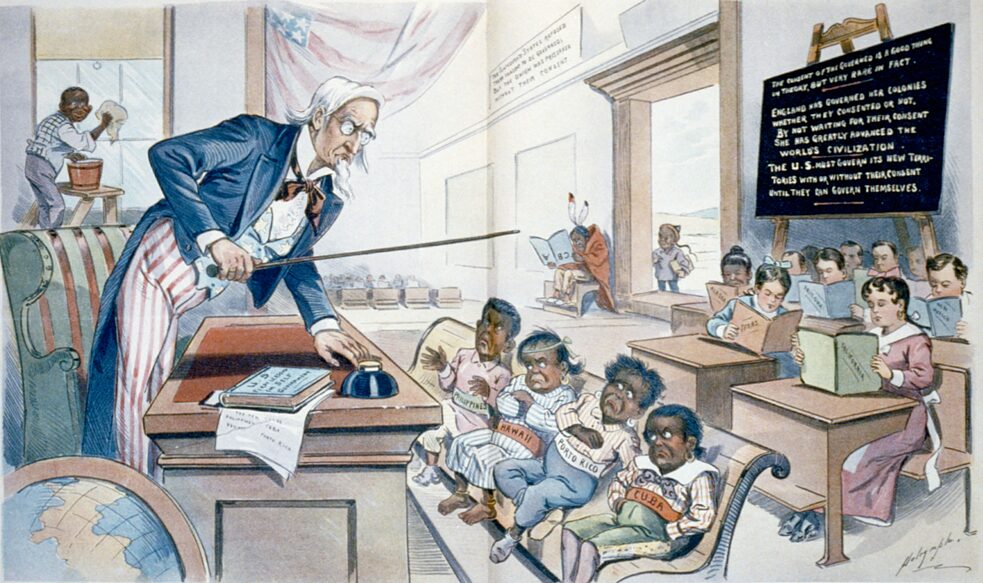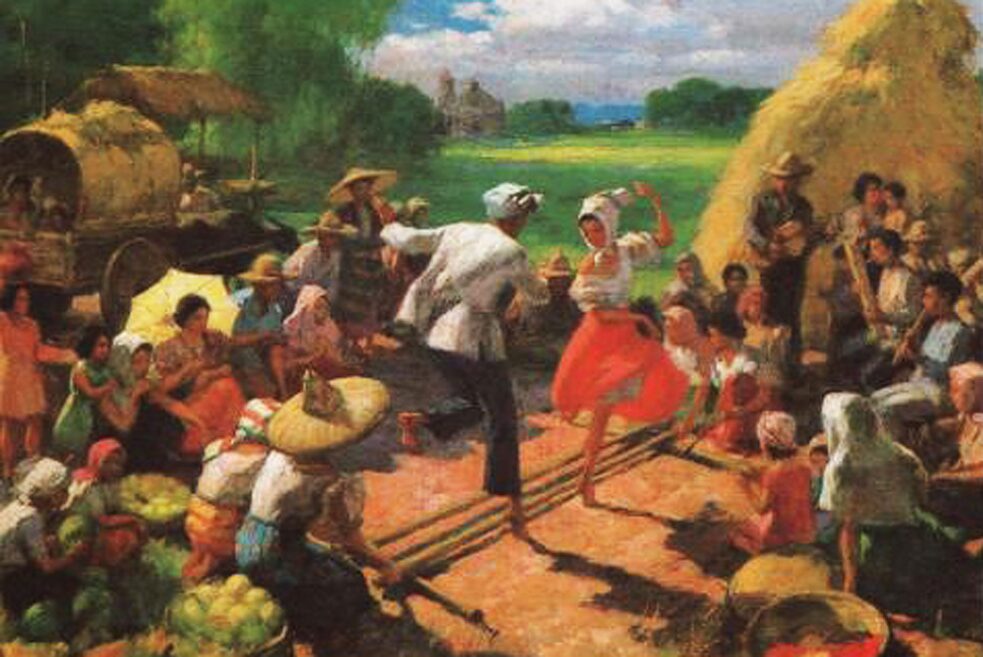
The Bars Of The Bahay Kubo - Part 1
By Tad Ermitaño, 2020Back in the early 1980s, I stumbled onto the Mowelfund Film Institute, which was then in the middle of its heyday of experimental film workshops. I was at the time a refugee from the sciences with a penchant for extreme music, and was immediately attracted to experimental film, which encouraged and unified my seemingly contradictory affinities for the technical and the transcendent. However, while the community in Mowelfund appreciated attempts at radical gestures, screenings of our works would inevitably attract art lovers with more conventional leanings. It was not uncommon to overhear some members of the audience (Filipinos, just to be clear) afterwards saying something to the effect that »Filipinos« didn't like those kinds of films. Or (more tellingly) to hear the films described by some adjectival variant of »Western,« »American,« or »European.«
In the realm of art at least, almost all confessions of unfamiliarity with a technical matter were inevitably accompanied by a rhetorical move to negate the technical, to dismiss it as unimportant or misguided.
But while pakikisama goes some way to explaining the logical paths by which the strange and alienating might be considered un-Filipino, it does not capture everything behind the issue, because I would definitely say that I grew up in a Manila that was drenched in a collective and instinctual hostility to technical matters. In the realm of art at least, almost all confessions of unfamiliarity with a technical matter were inevitably accompanied by a rhetorical move to negate the technical, to dismiss it as unimportant or misguided. Why this inevitable negation? And what did it have to do with America?
At this late date, I believe I can see this tangle of seemingly disparate phenomena as a set of symptoms. That is, as manifestations of a unified and underlying cause, with roots in technology’s historical association with the Philippines’ colonial rulers.
History and Technology
 Ahnsin rice cooker. | Photo by Khindmis is licensed under CC BY-SA
Ahnsin rice cooker. | Photo by Khindmis is licensed under CC BY-SA
Consider that iconic piece of Asian cooking technology, the rice cooker. It was invented in Japan to streamline the cooking of rice, the culture’s staple food. It does one necessary thing and nothing else.
The Philippines’ colonial history means that nearly all mass-produced technology is imported and carries the print of the habits, environment, and culture of its inventors.
It is understandable that the daily reality of people constantly bumping into the incongruities of imported machines might encourage the idea that technology itself is essentially foreign, but I would argue that there are deeper, and more insidious mechanisms behind the notion.
A Child’s Primer to Filipino Nationalism
 „España y Filipinas” 1886 oil on canvas painting by Filipino painter Juan Lunas. | Photo courtesy of the Lopez Museum and Library.
„España y Filipinas” 1886 oil on canvas painting by Filipino painter Juan Lunas. | Photo courtesy of the Lopez Museum and Library.
The Philippines is a gaggle of ethnic groups united (I am tempted to write “barely united”) by the historical accident of being colonized; first by Spain, and then by America. We speak over eighty different languages, many of which are mutually unintelligible. Our shared history is primarily a shared history of colonial oppression, a history which laid out the two tasks of 1) Conceiving said gaggle of ethnic groups as a people with a shared history and fate and 2) Conceiving an existential order in which the colonial masters are not the apex and/or model and/or teacher.
The first of these labors received considerable momentum from the novel Noli Me Tangere (Latin for »Touch Me Not«), written by the Philippine National Hero and polymath Dr. Jose Rizal. The novel catalogued the injustices perpetrated under the Spanish colonial government, and the author’s subsequent persecution and eventual execution by the colonial government only confirmed the novel’s assertions. With regards to the second task however, the Noli Me Tangere does not make much explicit contribution. Rizal disavowed the armed revolution advocated and eventually implemented by the Katipunan, and believed that the path to correcting colonial abuses lay in proper representation in the Spanish Cortez.
Our shared history is primarily a shared history of colonial oppression, a history which laid out the two tasks of 1) Conceiving said gaggle of ethnic groups as a people with a shared history and fate and 2) Conceiving an existential order in which the colonial masters are not the apex and/or model and/or teacher.
Technology as Colonial Power
 »School Begins« by Louis Dalrymple. The image first appeared in Puck magazine on January 25, 1899. | Public domain.
»School Begins« by Louis Dalrymple. The image first appeared in Puck magazine on January 25, 1899. | Public domain.
The colonizer’s power is not only that of force or military might. The colonizer’s more insidious, subcutaneous power derives from appearing to be a model or a goal. The colonizer appears as one who is further along the natural path of progress, so that the only way forward is to follow a path that leads to him. This story received considerable support from the ethos of Darwinism, whose biological tropes were hijacked by colonial scientists to organize races and cultures within hierarchies and narratives of linear progress that justified and abetted colonial projects.
The colonizer appears as both powerful and right, and the colonizer’s technology and sciences (in the sense of systems of organized knowledge) is the distillation of both these aspects. His technology performs miraculous tasks on a miraculous scale. His sciences reveal the keys to his miracles and the secrets of an invisible world. While it can still be argued whether the physical sciences are ultimately value-neutral, it is now abundantly clear that 1) Technology (as our rice cooker demonstrated) is influenced by culture and that 2) The colonial educational system where the sciences are eventually taught almost always inject the colonizer’s mores into its students. The path to the colonizer’s sciences entails that the native must learn to dress like the colonizer. To sit like him, eat like him, write like him, speak like him, and ultimately think like him. The native culture is at almost all points considered inferior or more primitive than the colonial culture. The native culture is cast as the student, and the colonizing culture, as the teacher.
The author of Noli Me Tangere, for all his virtues, was not up to the task of overcoming this worldview. Rizal, an intellectual educated in Europe, saw colonial injustices as a problem of faulty implementation of a valid—even laudable—system. His task, as he saw it, consisted of calling Spain to account, to demand that it fulfill its role as model and mentor to the race it had taken under its wing.
Stepping off the Staircase of Progress
At this remove, it is possible for us to formulate what would be necessary to overturn this Master and Student picture of colonial reality. In order to discredit the hierarchy embedded in this worldview, it would be necessary to be able to find ways of seeing the native culture as either being superior in some respect, or at least to conceive of a path to its future or role on earth that is different from the colonizer’s.In his book, Pasyon and Revolution, the scholar and historian Reynato C. Ileto revealed that such critiques had in fact been under construction in the cofradias—the religious brotherhoods associated with native uprisings in the Spanish colonial period, including that of the Philippine Revolution.
In order to discredit the hierarchy embedded in this worldview, it would be necessary to be able to find ways of seeing the native culture as either being superior in some respect, or at least to conceive of a path to its future or role on earth that is different from the colonizer’s.
 „The Tinikling Dance« 1954 oil on canvas painting by Fernando Amorsolo. | Photo by the National Commission for Culture and the Arts (NCCA) is licensed under CC BY-NC-SA 2.0.
„The Tinikling Dance« 1954 oil on canvas painting by Fernando Amorsolo. | Photo by the National Commission for Culture and the Arts (NCCA) is licensed under CC BY-NC-SA 2.0.
One can see echoes of these notions underwriting the 1950s paintings of Fernando Amorsolo, who is most famous for his kitschy, provincial idylls: romantic scenes where idealized natives lived in a kind of rural Eden. In his paintings he evokes a kind of uncomplicated harmony awash in provincial color. People are often barefoot, living in nipa huts, also called bahay kubo —bamboo frame houses with thatched roofs. The kubo’s residents sell fruit, till land, and dance the tinikling, a courtship dance where the dancers step nimbly between bamboo poles clapped together in waltz time. The paintings are flooded with a self-conscious iconography in which the Filipino essence is conceived and presented as a kind of noble provincial, living simply amidst natural abundance.
It is clear that this notion hit a chord in the culture. Amorsolo’s Tinikling series in particular was something of a hit, as even a casual googling turns up at least ten versions of the painting. This image of the tinikling-dancing noble provincial in his bahay kubo is found everywhere the Philippines is represented—from tourism campaigns to the interior décor of restaurants serving Filipino food, to stage presentations by Filipino expatriate communities. I would even argue that the logic of the noble provincial manifests in the music and writings of the composer Jose Maceda. However, I find its manifestations displayed in particularly interesting forms in the films of Eric de Guia, better known as Kidlat Tahimik.
 Bahay Kubo and Noble Provincials in vintage Philippines tourism posters. | Screenshot of google search.
Bahay Kubo and Noble Provincials in vintage Philippines tourism posters. | Screenshot of google search.